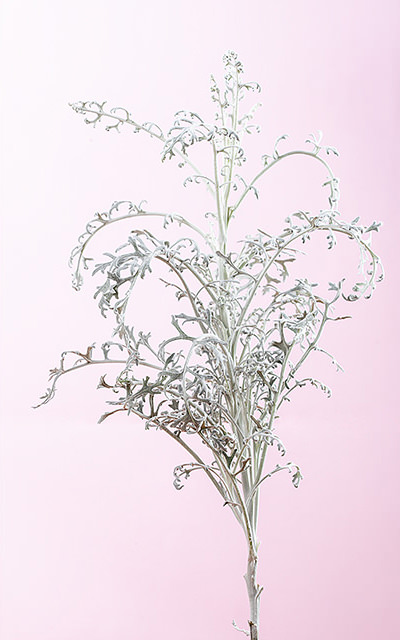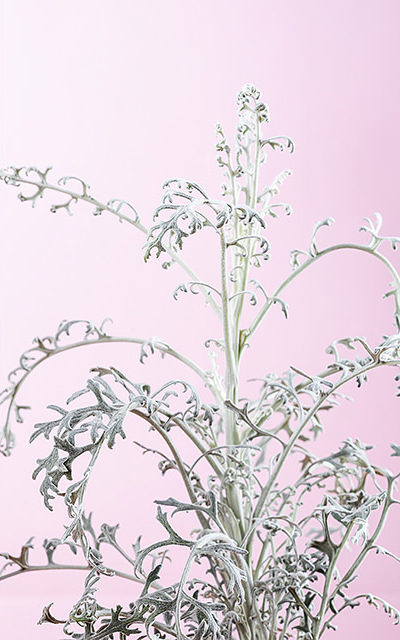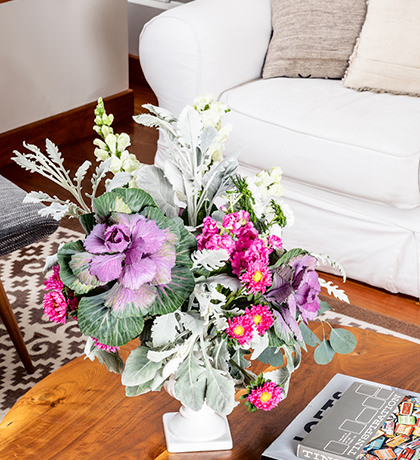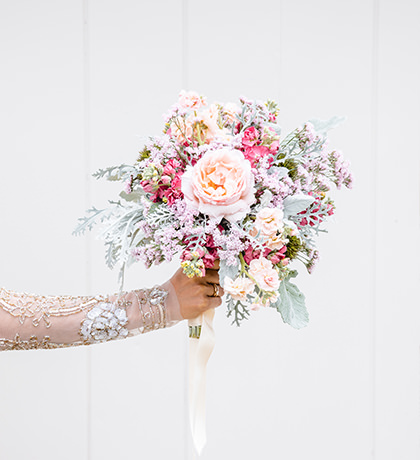Silver Dust
- Silver, serrated, feather-like, velvety leaves
- Perfect for use as filler or foliage in flower arrangements, separating bright colors or framing showy shrubs like roses
- Gives enough length to put in flower arrangements when cultivated with the right procedures
Culture Tips
CROP TIME
From planting to havest 20 weeks.
STEM HEIGHT
60-70 cm
PLANTING DENSITY
28 plants/m2
PRE-PLANTING
Soil: Well drained and loose, without clods. At least 25 cm deep.
PH: 5.5 to 6.0
Netting: Use two levels of netting, this serve as a support to the plants to develop straight stems.
TEMPERATURE
Dusty Miller responds to the temperature differential between day and night and stems fall short when the differential is negative. Daytime temperatures between 16-18 ° C and nighttime between 13-16 ° C favor growth.
Reducing temperatures between 7-13 ° C improves stem consistency.
CROP LABORS
Artificial Light or photoperiod:
Vegetative growth is achieved in long day conditions; artificial light should be given one week after planting in the field until harvest.
The long-day critical photoperiod is 14 hours of daylight, but a total of 16 hours of light per day is recommended to improve the length of the stem and shorten the production cycle.
15 minutes pulses of light and 15 minutes of darkness between 7:00 p.m. to 4:00 a.m are recommended. Application of growth-regulating hormone:
Gibberellic Acid: Apply 100 ppm in Week 9 after planting. This practice promotes vegetative growth.
Selection of stems: A selection of stems is done leaving only the 3 or 4 more vigorous stems to grow. Since the plant generates many shoots, this selection is done in the sixth, eighth and tenth week after planting but only has the capacity to produce 3-4 with good quality.
IRRIGATION
The beds must be well moist before planting. After planting, make a seal sprinkler irrigation. During the first week keep the humidity at field capacity. Start the drip irrigation 1 week after the transplant.
FERTILIZATION
A general formula of fertilization would be the following:
N: 150-200 ppm; P: 40-50 ppm; K: 150-180 ppm
Ca: 120-130 ppm; - C.E: 1.0
HARVEST
Harvest when the stem is at least 50 cm high, assembling branches of 10 stems inside a plastic cap..
POSTHARVEST TREATMENT
Measure the pH of the hydration water before applying any of the post-harvest products. Use citric acid to bring the pH up to 4.0. Then, place the stems immediately after cutting in a solution containing STS for at least for 2 hours (Chrysal AVB 1.0 cc / liter), protected from wind and direct sunlight. Then hydrate in Chrysal Professional 2 (dose of 2 cc /l) for 12 hours in cold room..
PACKAGING AND STORAGE
After post harvet treatment, the bouquets are normally packed in full cardboard boxes, placing 20 bouquets in each box and then immediately placed in the cold room to maintain vase life.
PESTS & DISEASES
•Aphids
•Mites
•Alternaria sp




